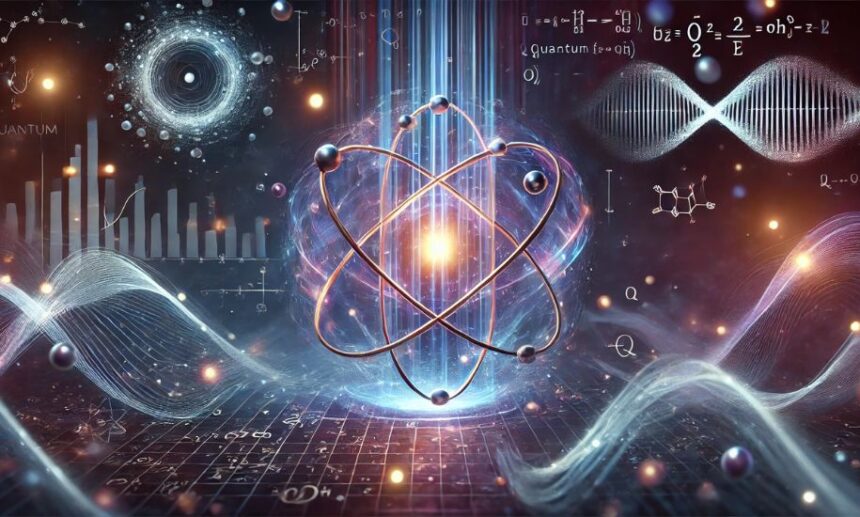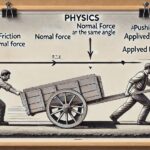Quantum Mechanics, one of the most intriguing and foundational branches of physics, forms the backbone of modern scientific understanding. At Physics Heaven, we delve into the complex yet fascinating world of Quantum Mechanics, exploring its principles, theories, and real-world applications.
The Origins and Evolution of Quantum Mechanics
Quantum Mechanics emerged in the early 20th century, revolutionizing how scientists perceive the behavior of matter and energy at atomic and subatomic scales. Classical physics, governed by Newtonian mechanics, failed to explain phenomena like blackbody radiation and the photoelectric effect. Pioneers such as Max Planck, Albert Einstein, Niels Bohr, and Erwin Schrödinger laid the groundwork for this new framework. Planck’s quantum hypothesis and Einstein’s photon theory introduced the concept that energy is quantized, which was a radical departure from classical ideas.
Fundamental Principles of Quantum Mechanics
At its core, Quantum Mechanics is built upon several foundational principles that challenge our classical intuition:
- Wave-Particle Duality: Particles such as electrons and photons exhibit both wave-like and particle-like properties, as demonstrated by the famous double-slit experiment.
- Quantization of Energy: Energy levels in atoms are discrete, explaining atomic emission and absorption spectra.
- Superposition: A quantum system can exist in multiple states simultaneously until measured.
- Entanglement: Particles can become entangled, meaning the state of one particle instantly influences the state of another, regardless of distance.
- Uncertainty Principle: Heisenberg’s principle asserts that certain pairs of properties, like position and momentum, cannot be simultaneously measured with precision.
Key Theories and Models in Quantum Mechanics
Quantum Mechanics encompasses various models and equations that mathematically describe quantum phenomena:
- Schrödinger’s Wave Equation: This fundamental equation describes how the quantum state of a physical system evolves over time.
- Heisenberg’s Matrix Mechanics: An alternative formulation of Quantum Mechanics focusing on observable quantities.
- Dirac’s Theory: Integrates quantum theory with special relativity, predicting the existence of antimatter.
- Feynman Diagrams: Visual representations used to calculate particle interactions in quantum field theory.
Real-World Applications of Quantum Mechanics
The principles of Quantum Mechanics are not confined to theoretical physics; they have profoundly influenced technological advancements and practical applications:
- Semiconductors and Electronics: Quantum Mechanics underpins the operation of transistors and diodes, foundational to modern electronics.
- Lasers: Quantum concepts explain stimulated emission, essential for laser technology.
- Magnetic Resonance Imaging (MRI): Utilizes quantum spin properties for medical imaging.
- Quantum Computing: Harnesses superposition and entanglement to perform complex computations far beyond classical capabilities.
- Quantum Cryptography: Ensures secure communication through principles like quantum key distribution.
Quantum Mechanics and the Future of Technology
At Physics Heaven, we recognize that Quantum Mechanics will continue to drive innovations in multiple fields. Quantum computing is on the verge of solving complex problems in cryptography, drug discovery, and materials science. Quantum sensors are being developed for ultra-precise measurements in navigation and environmental monitoring.
Philosophical Implications of Quantum Mechanics
Quantum Mechanics has not only transformed physics but also challenged our philosophical understanding of reality. Concepts like superposition and entanglement raise questions about determinism, causality, and the nature of existence. The famous Schrödinger’s cat thought experiment illustrates the paradox of quantum superposition, sparking debates in philosophy and science alike.
Conclusion
Quantum Mechanics remains a cornerstone of modern physics, unveiling the intricate and often counterintuitive behavior of particles at microscopic scales. As we at Physics Heaven continue to explore its depths, the promise of future discoveries and technological innovations stands as a testament to its profound impact on science and society.
Frequently Asked Questions (FAQs)
What is Quantum Mechanics?
Quantum Mechanics is a fundamental branch of physics that explains the behavior of matter and energy at atomic and subatomic levels.
Who are the pioneers of Quantum Mechanics?
Key contributors include Max Planck, Albert Einstein, Niels Bohr, and Erwin Schrödinger.
What is wave-particle duality?
It refers to particles like electrons and photons exhibiting both wave-like and particle-like behavior.
How does Quantum Mechanics impact technology?
It is foundational to technologies like semiconductors, lasers, MRI, quantum computing, and quantum cryptography.
What is the uncertainty principle?
Heisenberg’s uncertainty principle states that certain properties, such as position and momentum, cannot be simultaneously measured with complete precision.
What is quantum entanglement?
Quantum entanglement is a phenomenon where two particles become interconnected, so the state of one affects the other regardless of distance.
How does Quantum Mechanics differ from classical physics?
Quantum Mechanics deals with probabilities and discrete energy levels, unlike deterministic classical physics.
What are Schrödinger’s contributions to Quantum Mechanics?
Schrödinger developed the wave equation, which describes how quantum states evolve over time.
What are real-world applications of Quantum Mechanics?
Applications include electronics, lasers, MRI technology, quantum computing, and secure communication.
What is superposition in Quantum Mechanics?
Superposition is the principle that a quantum system can exist in multiple states simultaneously until observed.








